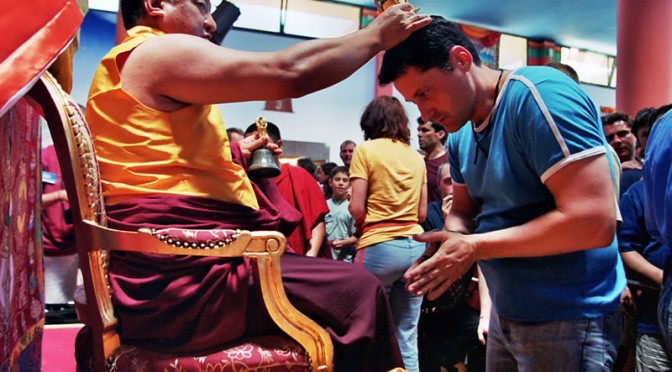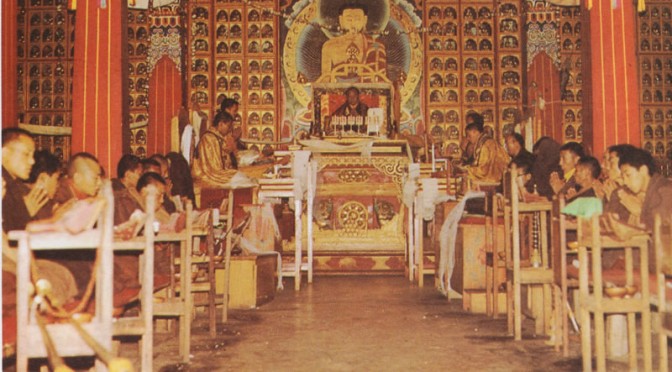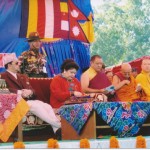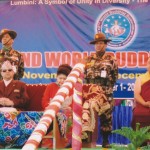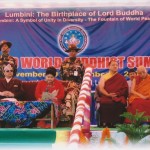First day, May 21
Shamar Rimpoche began the current series of teachings on the Indian master Vimalamitra’s classic text on stages of meditation practice on Saturday, May 21. Eagerly awaited by the monastic and lay sanghas, as well as several hundred practitioners from far and near, Rinpoche was formally welcomed by Lama Puntso, Dhagpo Kagyu Ling’s director. A mandala, symbolising the offering of the universe, and the traditional welcoming gifts representing enlightened body, speech and mind were then given.
Rinpoche began by summing up the teachings he gave last year. In Vimalmitra’s text, emphasis is placed on developing Shamatha, Calm-Abiding Meditation; Vipassana, Insight Meditation, and Bodhicitta, Awakened Mind. Last year, Rinpoche explained the beginning of the text, which maps out the mental and physical conditions most conducive to developing Shamatha and Vipassana.
As concerns Shamatha, a quiet place, a mind which desires little and is easily contented, getting rid of unnecessary activities, ethical discipline, keeping our committments and purifying our negative tendencies are needed. For the latter, there are two approaches: relative and ultimate. Relative methods of purification include practicies such as Vajrasattva and the Confession to the Thirty-Five Buddhas; the ultimate method refers to realizing the empty nature of mind and all phenomena. Rinpoche stressed that realization of emptiness was a valid remedy only if the practitioner had a deep-rooted understanding of the law of karma. « When we have realization, we naturally avoid all negative actions because these are based on the confusion born of dualistic clinging and ignorance, » he said.
As for Vipassana, Rinpoche told us that the main condition was finding a spiritual friend who had all the requisite qualities. Then we can use that person’s guidance to deepen our understanding of the Four Noble Truths and other basic tenets of the Dharma.
Rinpoche reminded us that for our practice to have results, awareness of these conditions and diligence are the keys to success. He stressed that the essence of the teachings is not related to culture, saying that it was quite unnecessary for practitioners to try to imitate another Buddhist culture’s way of dressing, acting or communicating. Buddhism, he said, appreared in India and then spread to many different countries over the centuries; the Dharma has always adapted to the mores of the host country. The true essence of the teachings is the consolidation of knowledge and the development of positive qualities, he explained.
Proper meditation practice requires proper posture. Shamar Rimpoche went over this point very clearly. He then reiterated the importance of using the breath to train in stablising the mind. He told us that physical well-being is conducive to meditation practice, and that dietary discipline is a great help.
Vimalamitra’s text gives stages for a progressive approach to meditation practice. Shamar Rimpoche emphasized the importance of truly training in one stage before moving on to the next. He said, « If the teachings aren’t thoroughly integrated through practice step by step, I can explain it all to you a hundred times, but you won’t understand.
« These are the classic instructions for retreat practice, » he said, « but that in no way makes them inappropriate for meditators who are not in retreat. When we have outside activities, of course we can practice, but the sources of distraction are more plentiful. The remedy, the main tool in all circumstances, is will-power. »
2nd day >>>










